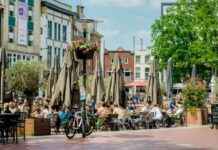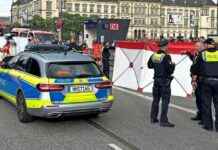On March 18, 1848, more than 10,000 people gathered in front of the Berlin Palace. They want freedom of the press, they want a constitution, they want a German federal state with a representative body. And indeed: the Prussian King Friedrich Wilhelm IV seems to give in. When he appears on the castle balcony, applause breaks out. Minister of State Ernst von Bodelschwingh read out the reform announcements.
Among other things, according to the king’s will, “a constitution on the most liberal basis should include all German states”. An eyewitness reports: “People congratulated each other that the great day of freedom and rebirth had also come for Prussia, gloriously, without bloodshed.”
More and more citizens stream in, there is a crowd in front of the castle portal, the king gets nervous. He orders “the palace square to be cleared”, but only “with a weapon in hand”. Not all soldiers obey this order, some draw their sabers, noise and commotion ensue. Suddenly two shots are fired. Nobody gets hit, but the spark explodes the powder keg. A bloody fight begins.
In the end, 288 men, eleven women and four children are dead and more than 600 wounded. The king gave the order to retreat during the night. The following day, the revolutionaries bring the dead into the castle courtyard. When the king appears, there are loud calls: “Cap off!” Friedrich Wilhelm IV is forced to pay tribute to those who died in March.
Two days later, he’s riding through town with a black, red, and gold-colored armband. The colors of the revolution are intended to show that national unity, a demand of the liberals, is a royal wish and will. Prussia, so the monarch explains, “is henceforth merged into Germany”.
When a Prussian national assembly meets in Berlin in May, the liberal deputies are in the majority. A new constitution should, among other things, abolish the privileges of the nobility. Liberal ministers initiate reforms. But the aristocratic landowners are opposed to this.
At the same time, on May 18, 1848, the members of the first all-German parliament met in Frankfurt’s Paulskirche to discuss a liberal constitution and the formation of a German nation state.
Revolutionary movements across Europe in the first half of the 19th century strove for national independence, freedom and equality. The supremacy of the nobility met with increasing resistance from the bourgeoisie. In the course of rapidly advancing industrialization, a proletariat emerged that lived and worked under inhumane conditions. Hunger revolts such as the weavers’ uprising in Silesia in 1844 were suppressed with military force.
In February 1848 there was a revolution in France, from which the bourgeoisie emerged victorious with the help of the Parisian proletariat and replaced King Louis Philippe with a president: France became a republic. This fueled the revolutionary movements in Germany – Baden, Munich, Frankfurt, Braunschweig, Dresden – but also in most other European countries.
There had been unrest in Berlin since March 6th. Friedrich Wilhelm IV wavered between giving in and taking action. After his ride through Berlin with the national colors of black, red and gold, he wrote to his brother: “Yesterday I had to put on the Reich colors voluntarily to save everything. If the throw is successful (…), I put it down again!”
It soon came to that. He rejected the imperial crown offered to him in 1849 by a delegation from the National Assembly of Frankfurt’s Paulskirche. The constitution drawn up there provided for a constitutional monarchy with a parliament and hereditary empire. It was unbearable for the monarch to depend on the sovereignty of the people. The constitution of the German Reich passed by the Paulskirche Assembly did not come into force. But it was a model for later constitutions and the basis for parliamentarism in Germany.
In Berlin, it was the Prussian “subservient mentality” and at the same time the inner turmoil of the opposition that endangered the success of the revolution, as the historian Rüdiger Hachtmann writes. The bourgeoisie wanted national unity and greater freedom at the same time.
Nevertheless, the March Revolution was not a purely bourgeois movement. Most of the barricade fighters belonged to the lower classes: journeymen, industrial workers and students. Not only did they want to “enforce the classic demands of the bourgeois opposition,” as Hachtman explains, they also made social demands, such as higher wages. In addition, the revolutionaries were young, 37 percent of those killed or captured in March under 25, only 18 percent over 40 years old.
In the end, the reactionary forces were stronger: by 1849 they had finally suppressed the revolution in Germany and in Europe.
You can also find “World History” on Facebook. We are happy about a like.




















